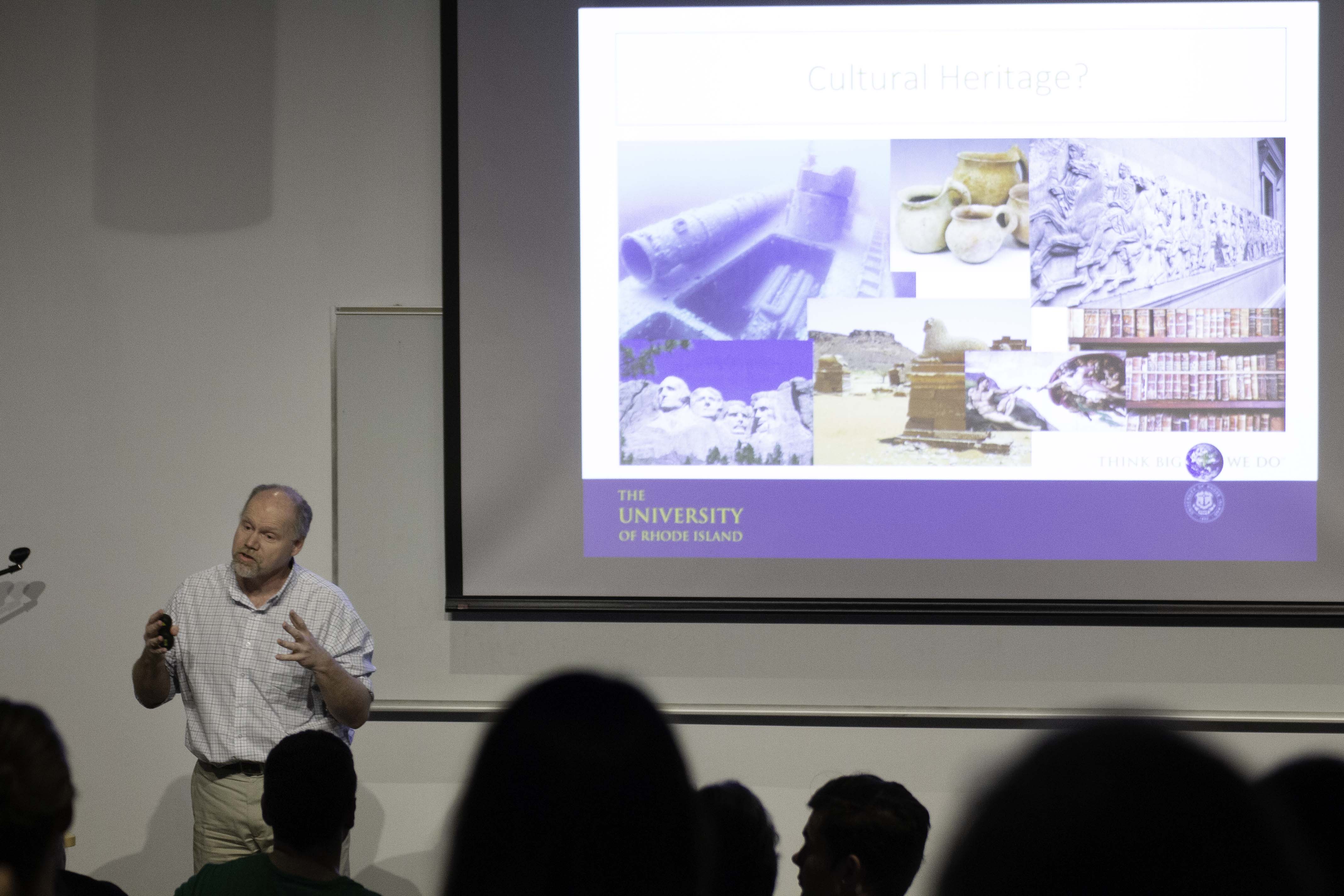Professor Rod Mather presents on fake news through shipwrecks and statues in history. |Photo by Chris Crosby
History professors talk about the development of fake news throughout centuries
In a political climate where fake news is considered commonplace, members of the history department are trying the to make
On Monday, four history faculty members held an event which examined the practice of fake news from a historical lens to show to the audience that it has always been an issue.
The event focused on fake news in the Crusades, medieval times, in Rhode Island’s history and more.
URI history professor Joëlle Rollo-Koster began the event by examining how fake news was circulated during the medieval era by hearsay. According to Koster, people would receive their information from the doors of churches, through messengers, via sermons and town criers. This information would be circulated through word of mouth, causing it to be changed in translation and giving rise to fake news unintentionally.
“What I call myself ‘medieval Facebook,’ is what we call rumors,” Rollo-Koster said. “Wars are started on rumors. Civil rebellions are started on rumors. Here you have, in the Middle Ages, something that spread and is technically understood as something like Facebook.”
Professor Rod Mather focused his presentation on fake news from the perspective of shipwrecks and statues in history.
He touched briefly on the Titanic, informing the audience that the historic ship was actually a cover story for the Navy to search for two submarines. The elegant liner it was portrayed as in the media was fake news.
Mather then transitioned to discuss the modern obsession of finding Noah’s Ark. Within the past few decades, several individuals have stated that they found the ark and the media has emphasized these “discoveries.”
“Why the obsession?” Mather said. “Most of it is triggered by religious belief. If this is true, the Ark is found, then that’s true. More importantly, a literal interpretation of the Bible is true.”
Professor James Mace Ward focused his portion of the presentation on how Jozef Tiso, a priest and the president of the Slovak Republic during the Holocaust, was falsely accused or suppressing Slovak language and creating falsities during his presidency. He also promoted their own version of ‘truth’, which did not always align with facts.
“Fake news in this case emerged from cultures of distrust,” Ward said. “Culture wars, post-war retribution and early-post communism all featured polarized societies that could not recognize their proponents as
Part of Slovakia’s issue during this time, Ward argued, was that they didn’t have an independent press. Press was being used as a communist tool to control language.
Professor Catherine DeCesare focused her presentation on how fake news became a part of Rhode Island’s history.
When Thomas Wilson Dorr, a suffrage reformer, wanted to gain the right to vote in Rhode Island, the government utilized newspapers to suppress his rebellion.
“The press, in the form of the Providence Journal, is going to play a major role in helping the efforts of the chartered government and of the law and order party, in terms of providing propaganda and in terms of support will be a major factor,” DeCesare said.
Student Jay Rumas, who is a member of Student Senate, attended the event and thought fake news is important for students to be aware of.
“You see fake news everywhere,” Rumas said. “You see it in rumors you hear here on campus. I think it’s very important for people to know how to distinguish what’s real and what’s not. I don’t think a lot of people put in the extra effort to figure out what exactly they’re hearing is true before they vote or before they act.”

